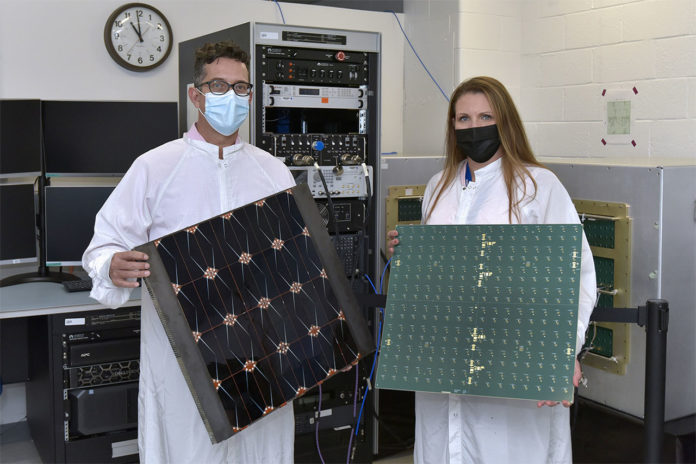The Air Force Research Laboratory’s (AFRL)and Northrop Grumman’s Space Solar Power Incremental Demonstrations and Research (SSPIDR) Project announced that they are one step closer to collecting solar energy in space and transmitting it to Earth using radio frequency (RF). The team has successfully conducted the first end-to-end demonstration of key hardware for the Arachne flight experiment.
A ground demonstration of novel components for the “sandwich tile” was used to successfully convert solar energy to radiofrequency (RF) – a fundamental step required to pave the way for a large-scale solar power collection system in space. For this to work, it is necessary to use receiving antennas on Earth to convert RF energy into usable power.
Space solar power is a key focus of AFRL, which awarded Northrop Grumman a $100 million contract in 2018 for the development of a payload to demonstrate the key components of a prototype space solar power system. The sandwich tile is currently under development as an essential payload component for Arachne and as a building block for a large-scale operational system.
The sandwich tile is made up of two layers: the first layer is a panel of highly efficient photovoltaic (PV) cells that collect solar energy and provide power to the second layer. The second layer is populated with components that enable solar to RF conversion and beamforming.
“The successful conversion of sunlight into RF energy in a lightweight and scalable architecture is a significant step forward in delivering the technology building blocks to achieve the Arachne mission,” said Jay Patel, vice president, remote sensing programs business unit Northrop Grumman. “We are helping to deliver a pioneering capability that can provide a strategic advantage to our forces around the globe.”
The ground demonstration used a solar simulator to illuminate the PV side of the tile and begin the Solar-to-RF conversion process. Successful testing of the individual tile for the Arachne payload provides a building block for a square meter panel of tiles – a threshold that has not yet been met by any other solar-to-RF experiments. Arachne is anticipated to launch in 2025.
